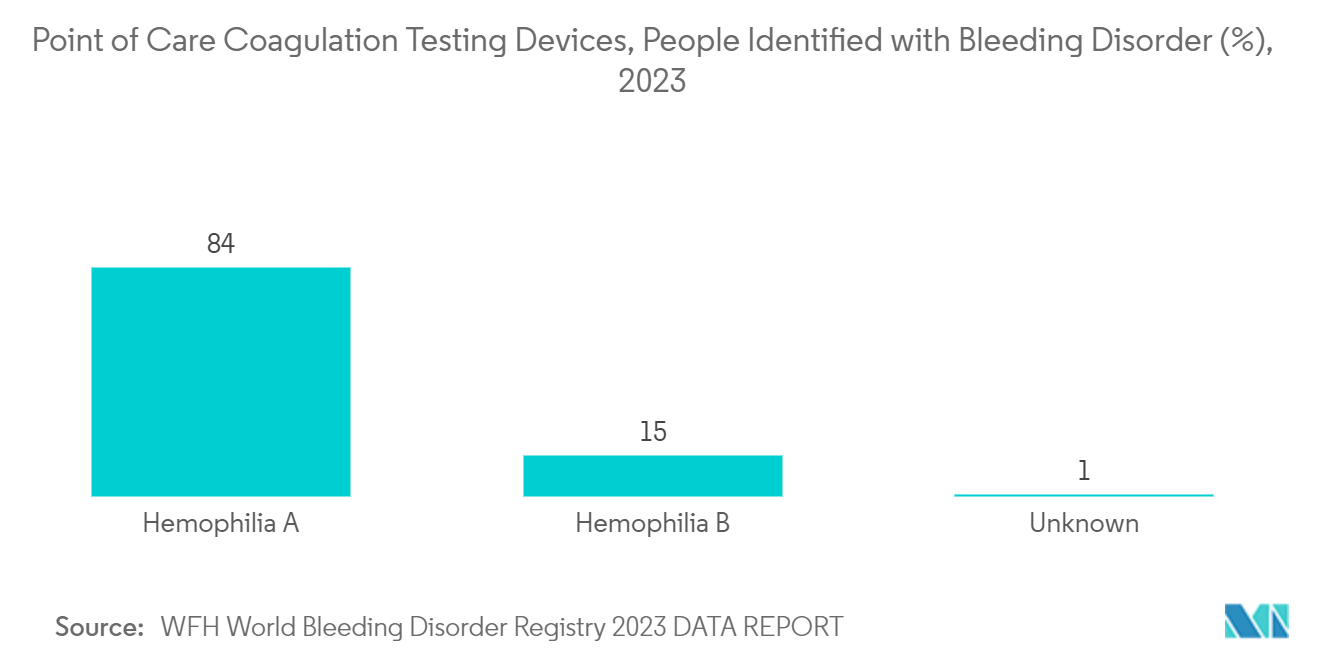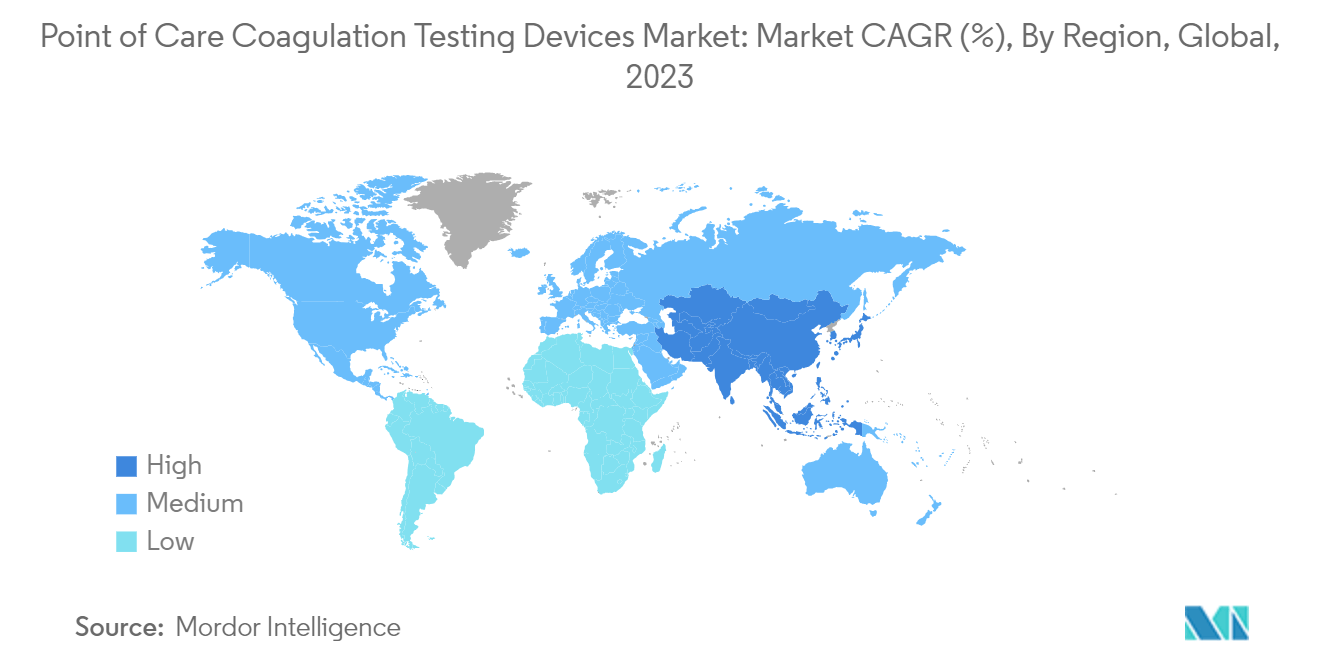Market Trends of Point Of Care Coagulation Testing Devices Industry
The Instruments Segment is Expected to Dominate the Market Between 2024 and 2029
Instruments such as monitors and analyzers evaluate the coagulation status of patients with blood-related disorders. The increasing cases of coagulation disorders like hemophilia, Von Willibrand, liver disease-associated bleeding, and vitamin K deficiency bleeding are projected to grow in the upcoming years. According to the World Federation of Hemophilia 2023 Report, 11,245 patients were identified with Hemophilia A, 2,050 with Hemophilia B, and 48 with unknown bleeding disorders from 13,343 enrolled patients across 44 countries. Hence, such instances suggest the increasing need for coagulation testing devices, thereby projected to drive the segmental growth between 2024 and 2029.
Moreover, the introduction of technologically advanced products such as rotational thromboelastometry (ROTEM) and thromboelastography (TEG) provides a more comprehensive evaluation of the whole blood’s propensity to form a clot. TEG and ROTEM have several advantages over traditional coagulation tests and are becoming increasingly important tools in managing patients with complex coagulation disorders. An article published by OpenAnesthesia in March 2024 stated that traditional coagulation tests provide a static outline of clotting ability, whereas viscoelastic tests such as TEG/ROTEM provide a dynamic picture of the clotting process and potential abnormalities.
The efficiency of technologically advanced products over traditional ones is anticipated to increase the adoption of coagulation testing devices among the patient population. Additionally, the ability of instruments to provide rapid assessment with high specificity for various blood components is expected to dominate the market in the upcoming years.

North America is Expected to Dominate the Point of Care Coagulation Testing Devices Market
North America is expected to dominate the market due to factors such as an increasing patient population with bleeding disorders, developed healthcare infrastructure, new product launches, and established players in the region. According to the Centers for Disease Control and Prevention, around 1.6 million females in the United States have bleeding disorders and are unaware of their condition. The bleeding disorders community includes patients living with von Willibrand disease, hemophilia, platelet disorders, and other rare conditions.
Moreover, as per the data published by the Canadian Hemophilia Society, in November 2023, around 300,000 Canadians carry an inherited bleeding disorder gene, of which only 10,000 people are registered in the Canadian network of inherited bleeding disorder comprehensive care clinics. Such blood-related diseases are anticipated to boost the adoption of point-of-care coagulation testing devices, thus influencing market growth in the region.
Furthermore, the market is driven by increased government initiatives, education programs, and awareness campaigns toward bleeding disorders. For instance, in October 2023, the World Federation of Hemophilia introduced Path to Access Care and Treatment (PACT), a multidisciplinary program in Mexico. A five-year outreach and diagnosis program aimed to improve and increase access to sustainable care for people with bleeding disorders. Hence, these initiatives increase the adoption of coagulation testing devices, thus contributing to market growth.
Additionally, several prominent players in the market are focused on expanding their geographical presence, which in turn is projected to create numerous growth opportunities for the market, thereby influencing market growth. For instance, in August 2023, Sysmex Corporation renewed its global partnership with F. Hoffmann-La Roche Ltd on hematology solutions. F. Hoffmann-La Roche Ltd will continue to offer Sysmex's hematology products, complementing their total laboratory solutions portfolio. Such strategic initiatives by key players to increase access to routine hematology diagnostic solutions are expected to drive the market growth.
Therefore, owing to the abovementioned factors, the market is anticipated to grow in North America.


